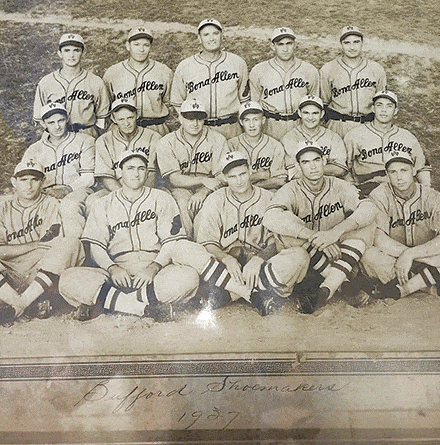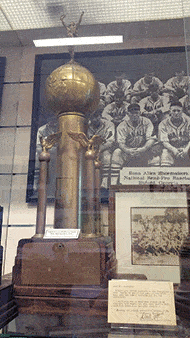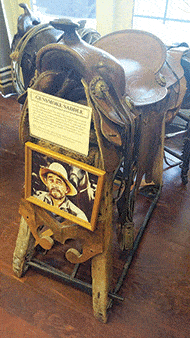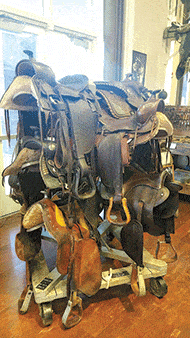

Bowman is the curator of the Buford museum. His family dates back to 1818 in the Buford/Hall County area. Bowman knows every painting, every telegraph, every article that’s archived there, and there is a quiet pride about the man. There is also an evident pride in Buford, the city that he calls home. Having gone to college at Mercer University in Macon, he eventually came back to his roots, and he wouldn’t have it any other way. He and volunteers from the Buford Lanier Woman’s Club take great care with items in the museum that document Buford’s past.
“Buford has had a museum since 1986. It was started by artists A.R. (“Randy”) Wood and Sandra Sumner, who were both artists,” said Bowman. In fact, Buford has been home to many artists over the years, and even today they own studios and galleries in the old Bona Allen Tannery. “For a time, Buford was referred to as the ‘Soho’ of the South,” Bowman said, smiling. Today, glass blowing artists, painters, sculptors, potters and other artists still call The Tannery home. Several paintings and other works of art by Buford artists are displayed in the museum today.
“In the ‘90s, the restaurants came in on Main Street, and little boutiques and specialty shops followed. Main Street became a posh little strip, and that drove up property values and rent, which drove the artists out,” said Bowman. They moved into the old horse collar factory, also owned at one time by the Bona Allen family. More than 100 artists have called Buford home at one time or another. The city was home to an annual plein air event, one in which artists set up easels and painted scenes from areas all throughout Buford.
“Up until 1960, Buford was the largest city in Gwinnett County, at least in population,” Bowman said. That fact can be credited to the businesses in the city, namely the Bona Allen Tannery and leather goods factory. When the Great Depression hit, Bona Allen not only didn’t fold; it thrived. When businesses folded under the weight of the Depression, people turned back to farming to survive. They needed harnesses and leather collars for horses and livestock. Bona Allen had no debt, and they prospered during that time.
According to Bowman, probably the most valuable items in the Buford museum are the photographs. They tell the city’s story, and the story of the families and people who lived there. The most unusual item in the museum? “Well, that has to be Festus’ saddle (Festus was the deputy in the hit show Gunsmoke). That saddle was made by Bona Allen, and it was actually for Festus’ mule, Ruth. Ruth was a male,” laughed Bowman. 
There are many saddles on display in the museum, each with beautiful tooling and detail that make them one of a kind and all made by Bona Allen. The saddles used in the show Bonanza wer made by Bona Allen, as were Gene Autry’s and Roy Rogers’ saddles. Bona Allen had earned the reputation of being the best saddle and leather product makers in the country. But in 1981, the fire that was described as Gwinnett’s largest destroyed the Bona Allen Tannery and grounds.
For a time, Buford was even known as the “New York of the South,” because of the busy, progressive reputation it had, with the railroads and thriving economy the city enjoyed. At one time, Main Street was paved with cobblestone. There were 3 pharmacies on Main Street, too, and each of them enjoyed a thriving business. One of the neon pharmacy signs hangs in the museum today.

The Buford museum has been housed in 5 different locations over the years, and there have been several curators. In 1993, the museum was dedicated to Handsel Grady Morgan, Buford’s historian. In 2006, Bowman became the museum’s curator. He brought years of experience in collecting and preserving historical items, including homes. A few years ago, city leaders told Bowman that he could have a ground floor area in Buford’s new Community Center and Theater for the museum. “They gave me everything I asked for here, including tinted windows and special lighting, to preserve the treasures that we have here,” said Bowman.
The Buford Museum is located at 2200 Buford Highway, Suite 108, in Buford. Hours of Operation are 11 a.m. – 5:00 p.m., Thursday – Saturday. Call 770-945-4559 for more information, or visit the museum’s website at www.museumofbuford.com.

